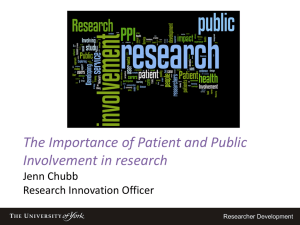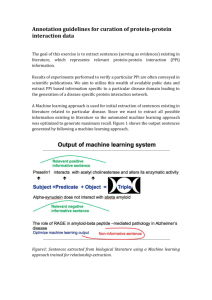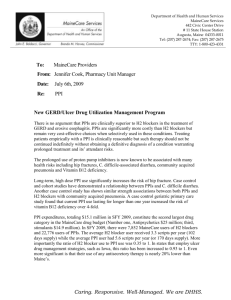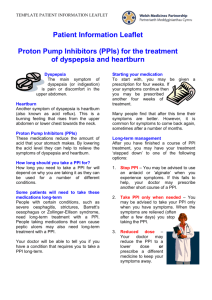Process Parameters' Flow Management
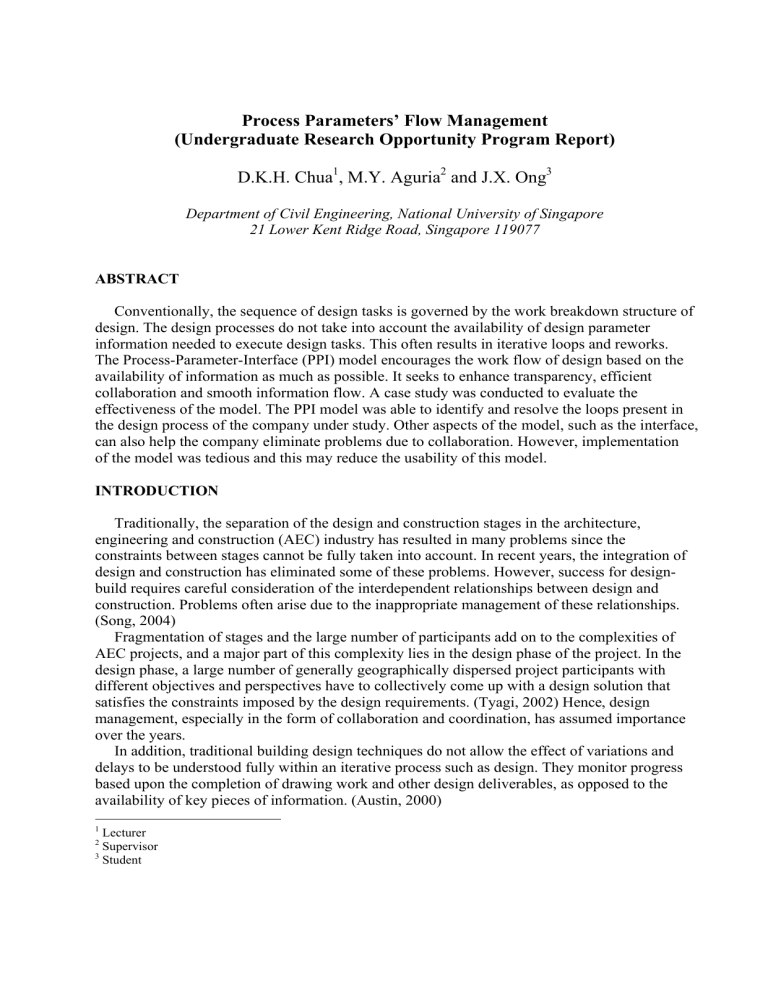
Process Parameters’ Flow Management
(Undergraduate Research Opportunity Program Report)
D.K.H. Chua
1
, M.Y. Aguria
2
and J.X. Ong
3
Department of Civil Engineering, National University of Singapore
21 Lower Kent Ridge Road, Singapore 119077
ABSTRACT
Conventionally, the sequence of design tasks is governed by the work breakdown structure of design. The design processes do not take into account the availability of design parameter information needed to execute design tasks. This often results in iterative loops and reworks.
The Process-Parameter-Interface (PPI) model encourages the work flow of design based on the availability of information as much as possible. It seeks to enhance transparency, efficient collaboration and smooth information flow. A case study was conducted to evaluate the effectiveness of the model. The PPI model was able to identify and resolve the loops present in the design process of the company under study. Other aspects of the model, such as the interface, can also help the company eliminate problems due to collaboration. However, implementation of the model was tedious and this may reduce the usability of this model.
INTRODUCTION
Traditionally, the separation of the design and construction stages in the architecture, engineering and construction (AEC) industry has resulted in many problems since the constraints between stages cannot be fully taken into account. In recent years, the integration of design and construction has eliminated some of these problems. However, success for designbuild requires careful consideration of the interdependent relationships between design and construction. Problems often arise due to the inappropriate management of these relationships.
(Song, 2004)
Fragmentation of stages and the large number of participants add on to the complexities of
AEC projects, and a major part of this complexity lies in the design phase of the project. In the design phase, a large number of generally geographically dispersed project participants with different objectives and perspectives have to collectively come up with a design solution that satisfies the constraints imposed by the design requirements. (Tyagi, 2002) Hence, design management, especially in the form of collaboration and coordination, has assumed importance over the years.
In addition, traditional building design techniques do not allow the effect of variations and delays to be understood fully within an iterative process such as design. They monitor progress based upon the completion of drawing work and other design deliverables, as opposed to the availability of key pieces of information. (Austin, 2000)
1
Lecturer
2
Supervisor
3
Student
Hence, new and improved design management methodologies are needed. The processparameter-interface (PPI) model of design management has been developed to facilitate transparency, smooth information flow and effective collaboration. (Tyagi, 2002) The objective of this project is to study the effectiveness of the PPI model and apply this model in a case study to garner feedback and to identify problems that may arise.
MATERIALS AND METHODS
In recent years, several methodologies have been proposed in the field of design management.
In his paper, Austin (Austin, 2000) describes the Analytical design planning technique
(ADePT), which allows the effect of variation and delays to be understood within the design process, using the Dependency Structure Matrix.
To manage the hidden constraints in the supply chain and information flow, Chua (Chua,
2003) introduced the Integrated Production Scheduler (IPS), which models the resource and information constraints in addition to the process constraints for construction processes.
Consequently, the IPS is able to enhance the reliability of construction look-ahead plans.
The Work Breakdown Structure (WBS) was the focus of Godinot’s work. (Godinot, 2003)
The WBS can be used to define the scope of the project, integrate the aspects of project control and reporting and to be the basic tool for full interface management.
Wang proposed the use of the risk management framework to manage construction projects.
(Wang, 2004) A risk model named Alien Eyes’ Risk Model, was proposed to enable better categorizing of risks, clear representation of the influence relationship among risks at different hierarchy levels as well as to reveal the mitigating sequence and priority of risks.
Song (Song, 2004) developed a model to manage the interdependence and coordination between design and construction using product as interface. Parameters are used to describe product components as well as to depict design and construction processes. States are then used to represent the different status of parameters. A dependency network is formed by connecting the basic process activity – parameter state relationships.
Concurrent engineering was proposed to reduce design delivery time. (Bogus, 2005) Bogus identified evolution and sensitivity characterizations of design activities that can help in deciding whether overlapping is feasible or not.
The PPI model is a new design management tool that focuses on resolving the problem of long rework loops by making the design process transparent, enabling efficient collaboration, and smoothening of information flow. Transparency is facilitated by the design dictionary, the interface and the alert and conflict managers. Efficient collaboration is enabled by the internet as well as the engine’s alert manager, conflict manager, loop resolution manager, and scheduling manager. Smooth information flow is enabled by the engine’s scheduling manager. (Tyagi, 2002)
The implementation of this model is discussed in detail in the next section.
RESULTS AND DISCUSSION
The use of the PPI model can be broken down into 5 steps:
(i) Definition of the parameters and their attributes in the design dictionary.
(ii) Publishing of the parameters by design specialists in the form of information requirement and production tables through the interface.
(iii) Synthesizing of the information requirement and production tables into matrix form.
(iv) Triangularization Algorithm applied to yield an optimized sequence in the form of an information-based design dependency matrix.
(v) The loop that remains is an inevitable loop and can be resolved by collaboration.
Collaboration between the project participants is facilitated by the loop resolution manager, conflict manager, as well as the alert manager.
To evaluate the effectiveness of this model, a case study is carried out. The PPI model is applied on a construction company specializing in the oil and gas industry. Through interviews and by working in one of the company’s project teams, the following was identified:
The Design Process
The design process was guided by a comprehensive Functional Work Breakdown Structure
(FWBS), where design specifications are clearly stated. After understanding the client’s requirement, 2 main phases of design commenced, namely the basic design phase and the detailed planning phase. In the basic design phase, deliverables were the plot plan, piping layout, instrument diagram, design for equipment and devices, process flow diagram as well as the process design calculation. In the detailed planning phase, deliverables consisted of the detailed calculations, material take-off, updated drawings and specifications, updated drawings for construction and fabrication, as well as the master schedule. Design was carried out in the
Engineering Department, which consisted of the Piping, Civil, Electrical, Process, Instrument and the Equipment Departments. Other departments, which included Construction, Projects,
Accounts, Procurement and Administrative Departments, handled other operational aspects of the company.
Problems Present in Design Process
Collaboration was one of the problems identified in the company. Information, such as milestone definition, was not consistent between the departments and often led to confusion as well as errors in drawings and scheduling.
The difficulty in disseminating the most updated design data to the various departments and the subcontractors also posed serious problems. In many instances, rework loops in design resulted. For example, the Piping department issued an updated version of a drawing. The drawing will be sent to the Projects department, which is responsible for coordinating the design process. The Projects department will print the updated copy and give the hard copy to the various departments. However, sometimes, the other departments may render the design erroneous due to factors invisible to the Piping department, so the Piping department has to redesign considering the constraint that has surfaced. This problem is compounded by frequent version changes as well as the large number of drawings involved.
In addition, by following the FWBS, design was not done based on the availability of information. Hence, assumptions were made in designs and rework loops were common.
How the PPI Model can Help
The PPI Model Interface and Design Dictionary can improve collaboration during the design process. By publishing information required and produced, the various departments can obtain the parameters needed for design more conveniently and systematically. Hence, iteration loops and reworks can be reduced. The presence of a database which is accessible via the internet can also improve information dissemination, reducing confusion.
The PPI model engine can resolve the iterative loops present in the design process, optimizing the design sequence and minimizing reworks.
Design Parameters in Matrix Form
The design parameters were synthesized into matrix form, as shown in Appendix A. Many loops were evident. The Triangularization Algorithm was then applied to this matrix, eliminating all but 1 loop, as shown in Appendix B. The optimized design sequence was also obtained.
CONCLUSION
The PPI model is able to reduce design time and cost through improved scheduling, reduced reworks and efficient collaboration. It provides flexibility, enables proactive collaboration and is information-centric.
However, at the current stage, the use of this model may be hindered by the tedious process of implementation, especially in the creation of the design dictionary. More development of the software has to be carried out to improve user-friendliness as well as to minimize the time spent on parameter creation and definition.
It is also important to understand the barriers that prevent companies from using the available construction management software. By focusing on the barriers and taking steps to address them, the use of the software developed can be expected to increase.
ACKNOWLEDGEMENTS
This research project has allowed me to understand more about the construction industry and how construction management models can help improve construction efficiency and productivity. I would like to express my gratitude to all who helped me in one way or another in this project, in particular the following people:
Associate Professor David Chua, whose guidance and enthusiasm has made this project a great learning experience for me.
Mr Yusof Aguria, who was always patient and approachable, and who gave me the direction as well as imparted me knowledge required for this project.
Mr Peter Ho and Mr Steven Lee of JGC Singapore Pte Ltd for giving me the opportunity to intern in a construction company, allowing me to understand the issues and constraints surrounding the task of construction project management.
Last but not least, I would like to thank NUS for having the Undergraduate Research
Opportunity Program (UROP), from which I have gained much experience and knowledge.
REFERENCES
Austin, S., Baldwin, A., Li, B.Z. and Waskett, P. (2000), “Analytical design planning technique: a dependency structure matrix tool to schedule the building design process”,
Construction Management and Economics, Vol. 18 , 173-182.
Bogus, S.M., Molenaar, K.R. and Diekmann, J.E. (2005), “Concurrent engineering approach to reducing design delivery time”, Journal of Construction Engineering and Management,
ASCE, 1179-1185.
Chua, D.K.H., Shen, L.J. and Bok, S.H. (2003), “Constraint-based planning with integrated production scheduler over internet”, Journal of Construction Engineering and Management,
ASCE, 293-301.
Godinot, M. (2003), “The work breakdown structure matrix: a tool to improve interface management”, National University of Singapore.
Song, H. (2004), “Product oriented coordination between design and construction”, National
University of Singapore.
Tyagi, A.
(2002), “Process-Parameter-Interface model for design management”, National
University of Singapore.
Wang, S.Q., Dulaimi, M.F. and Aguria, M.Y. (2004), “Risk management framework for construction projects in developing countries”, Construction Management and Economics, Vol.
22 , 237-252.


